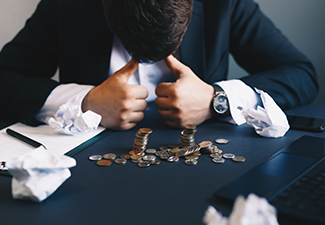What Does Life After Bankruptcy Look Like?
Dec. 11, 2021
 Is there life after bankruptcy? That’s a scary thought that many people face when their debts have gotten out of hand and their best recourse is to wipe them out through filing bankruptcy. Though the elimination of overwhelming debt is welcomed, the prospect of starting all over can be frightening. Many fear they will have nothing left when bankruptcy is over.
Is there life after bankruptcy? That’s a scary thought that many people face when their debts have gotten out of hand and their best recourse is to wipe them out through filing bankruptcy. Though the elimination of overwhelming debt is welcomed, the prospect of starting all over can be frightening. Many fear they will have nothing left when bankruptcy is over.
In truth, it’s possible to keep most or even all of what you own after you file for either Chapter 13 or Chapter 7 of the bankruptcy code. In Chapter 13, you can keep everything, in most cases, so long as you have a monthly income with enough cash left over to pay off a consolidated loan obligation. In Chapter 7, exemptions exist that can often allow you to stay in your home and keep your car.
The point, then, is how do you go forward after bankruptcy is over and you’ve been discharged from your debts?
If debts are overwhelming you in or around Amarillo, Texas, don’t hesitate to contact me at Swindell Law Firm. I have the answers to all of your questions and can guide you through the bankruptcy process so you can get a fresh start in life. I proudly serve clients in the entire Texas Panhandle, including Borger, Pampa, Hereford, and Dumas.
The Bankruptcy Process
When you file for bankruptcy under either Chapter 13 or Chapter 7, the court will issue an automatic stay. This means that creditors can no longer contact you, and any repossession or foreclosure efforts must be put on hold. Secured creditors, however, can petition to have the stay removed so that your car may be repossessed or your home foreclosed if you don’t make your late payments current.
In Chapter 13, which is called the wage earners option, you can include the past-due amounts in your repayment plan, which consolidates all your other debts as well. You then pay off your consolidated obligations over a three- to five-year period. Of course, once you submit the plan, you will have to then keep current on your home and auto loans.
If you file under Chapter 7, the liquidation option, Texas has very generous exemptions that can protect your home and vehicles. Basically, you can exempt your primary residence up to almost any amount of equity, and the same holds true for every vehicle licensed to a separate household member. In other words, the court can’t usually sell off your home or vehicles to pay your debt obligations.
If you’re behind in your payments in Chapter 7, however, you can still lose either your car or home if you don’t make them current and then honor your monthly obligations.
What Happens After Bankruptcy
Bankruptcy does not come without a price, of course, and that price is a hit on your credit rating, which was probably damaged to begin with when you ran up debts you couldn’t honor. A Chapter 13 filing will stay on your credit report for seven years; a Chapter 7 for ten years. Your credit score will also be affected, but you can make efforts to raise the score by carefully taking on new obligations and dutifully honoring them.
There are a few proven credit repair steps you can take to get back on track, including:
Getting a Credit-Builder Loan: Working with a credit union, you can often obtain a small loan, usually no more than $1,000, with a fixed monthly repayment plan lasting anywhere from six months to two years. The catch is that the money stays in your account and cannot be accessed until the loan has been paid off. Paying on time each month will help raise your credit score.
Setting Up a Secured Credit Card: In this scenario, you deposit funds with a credit union or bank, and in return, they issue a credit card good up to the limit of your deposit. You don’t want to run up the card to its limit, but rather to pay everything you charge on time every month, so in effect, you have a zero balance. Doing this will help raise your credit rating.
Accepting a Credit Card Offer: Some institutions will solicit you for a credit card after you’ve filed for bankruptcy. Often, the offer will come with a high interest rate and a yearly fee. Obtaining and using the card sparingly, while making on-time monthly payments for the full amount owed, will help elevate your credit standing.
In other words, life after bankruptcy carries some restraints, but with resolve and determination, you can build your credit back up, and in a few years be able to enjoy the benefits of creditworthiness again.
How the Swindell Law Firm Can Help
For 40 years, I have helped individuals and families who faced overwhelming debt secure a fresh start through the bankruptcy code. I can help you, too. Set aside your fears about bankruptcy, and contact me to set up a free consultation. The law exists to help those who are drowning in debt they can’t control.
If you reside in Amarillo, Borger, Pampa, Hereford, or Dumas, Texas, or anywhere in the Texas Panhandle, let me help you find the financial relief you need. Call Swindell Law Firm today.
